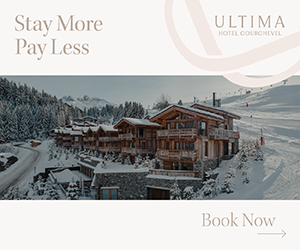An exclusive, front-row seat for the spectacular dunescape of Sossusvlei in the World Heritage Site Namib Sand Sea is a pretty winning USP. And the dreamy desert lodge that is Little Kulala takes care to gift-wrap it with the very best in luxurious lodgings, superb, sustainable cuisine and pulse-raising adventure activities.
How beautifully the writer Terry Pratchett described the descent of darkness in landscapes such as Sossusvlei’s. ‘Night poured over the desert’, he wrote in his novel Jingo, and ‘came suddenly, in purple’. Sky-gazing from our rooftop beds at Little Kulala lodge, we witnessed this truth, as the day evaporated in an instant, as if splashed in a gazillion gallons of inky paint. In the same moment, the night shone with stars that – to quote Jingo again – ‘drilled down out of the sky, reminding any thoughtful watcher that it is in the deserts and high places that religions are generated’.
On this metric, conservation tourism specialist Wilderness’ Little Kulala could hardly be better placed to launch a spiritual movement. A tiny dot in the vastness of the Namib Desert, with views of the monumental saffron, turmeric and ginger dunes of Sossusvlei, it inspires zealotry, though for the miracles of nature rather than a deity. Punctuated by the sculptural skeletons of centuries-dead camel thorn trees, the landscape’s colours melt and morph with the daily journey of the sun revealing intensities of reds, oranges and blues we had never seen. And from the comfort of our lodgings, we saw many of our desert-adapted neighbours – ostriches, springbok, oryx, black-backed jackals and Namibia’s endemic dune lark. For more intrepid moments, electric fat-bikes, hot-air ballooning, quad bikes and guided hikes are among the options for exploring the area.
The lodge is a gateway not only to this part of the 27,000-hectare Kulala Wilderness Reserve (an exclusive-use entrance gives guests direct Sossusvlei access that swerves the main, day-tripper way-in) but also to perfect peace. Fully solar-powered, its easeful accommodations – 11 thatched villas, or kulalas (meaning to sleep, in the Ovambo language), each with wraparound deck, open-air lounge area and small plunge pool– are decorated in earthy, desert hues that cocoon guests in calmness and serenity.
Equally impressive are the specially commissioned artworks found in both kulalas and throughout the property. When interior designer Cate Simpson took on the camp’s extensive revamp in 2020, her vision was to reflect the ‘haunting and ethereal’ landscape in every detail, and this intent shines out in bespoke glass pieces, textiles, paintings and ceramics. “The artists capture the patterns of the dunes, the erosion lines of the desert ecosystem, the flora and the fauna”, Cate says.

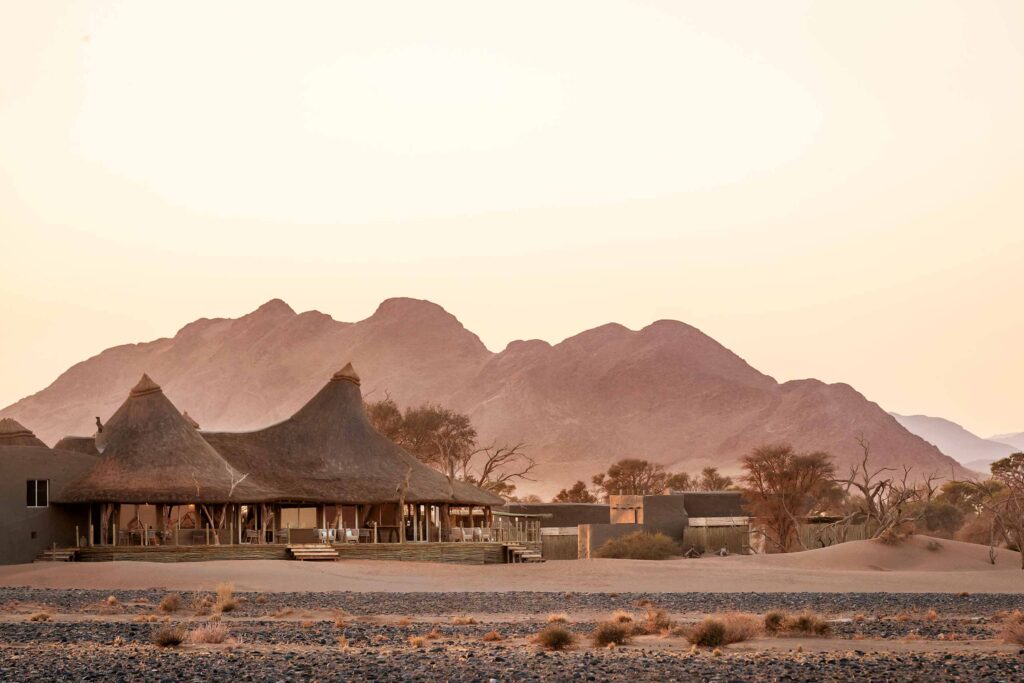
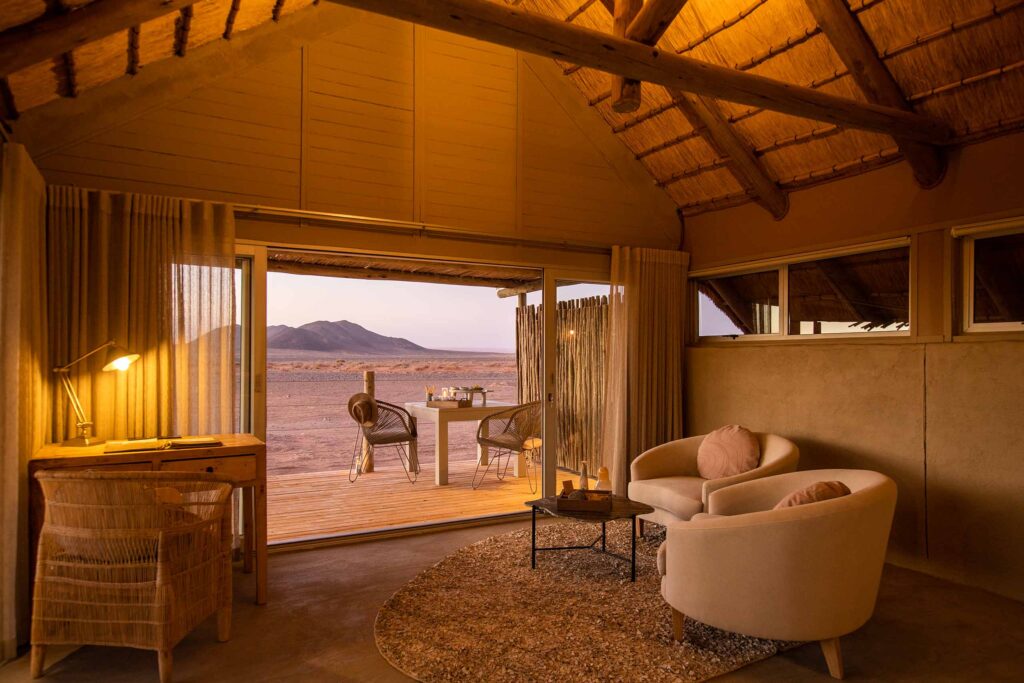
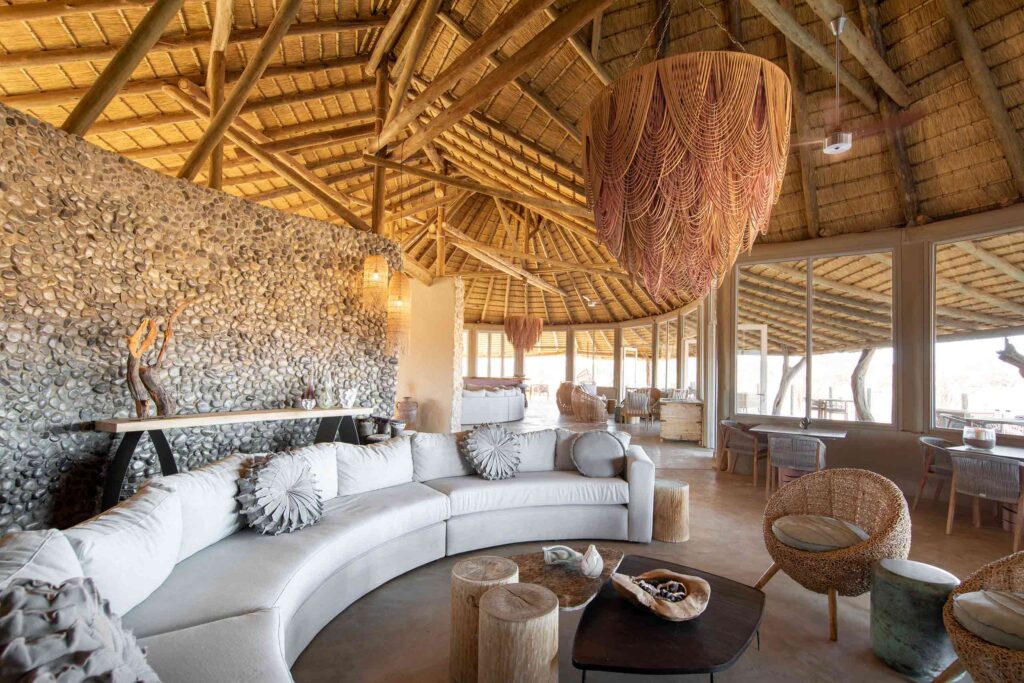
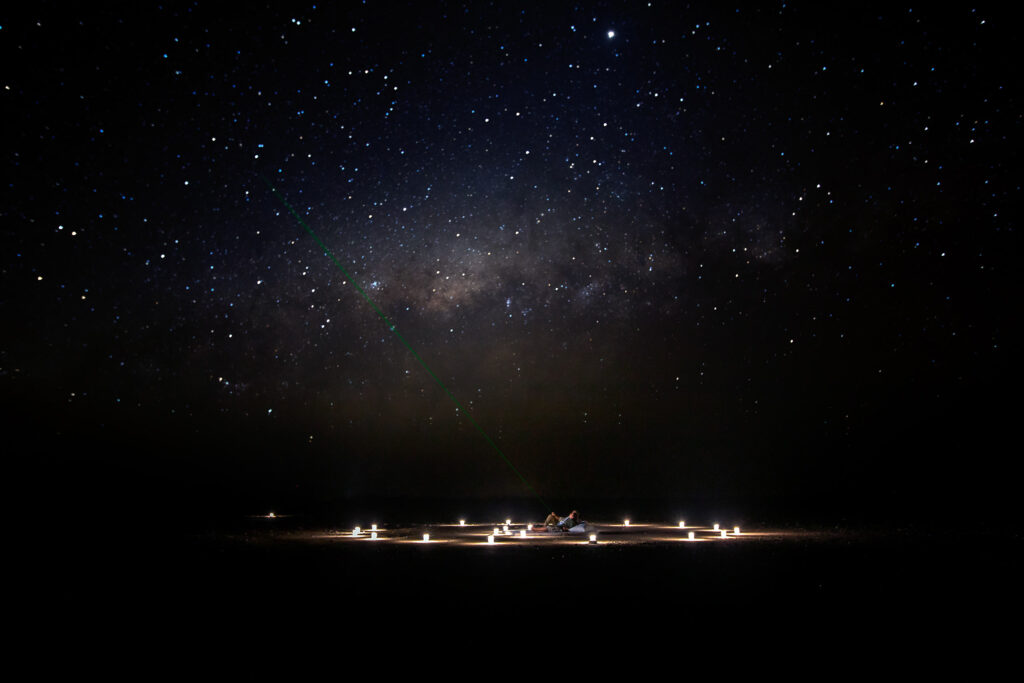

| Perfect for | Fly into | Right on time |
| The Adventurer | WDH, then FYGK by light aircraft | GMT +2 |
| While you’re Out There |
| Get sands-on with the magnificent, wind-sculpted-for-five-million-years dunes of Sossusvlei. Climb them, sink into them and race down them. At 325m, Big Daddy is the tallest of the Sossusvlei dunes – ascending it is tougher than it looks, but the descent is pure joy. Leap, slide and fly your way down. |
Her gorgeous design anchors the lodge with the large communal pavilion space, all curved walls and indoor-outdoor spaces beneath a cluster of cute, conical thatched roofs like wonky wizards’ hats. This hub encompasses a luxurious lounge, dining space, multiple cosy seating nooks, a bijou spa, wine cellar, library and a boutique offering stylish safari essentials and craft goodies with a local flavour.
The cuisine at Little Kuala is itself a work of art, with every meal as much a joy to look at as to taste. Here, so far from anywhere anything can grow, the chefs create beautifully textured, varied and colourful menus using whatever arrives on the supply plane every few days. During our stay, this included grains, pulses, fruits, various meats including ostrich and venison, and vegetables. A mushroom and aubergine tagine would, we’re sure, have had Ottolenghi asking for the recipe.
Unlike on other safaris, the incentive to leave a cosy bed at Little Kulala is not the hope of seeing lions or leopards, cheetahs or elephants, but of witnessing the dunes’ shifting sands as winds whip them into peaks or smooth their curves – and waiting for the optimal moment to climb them. Plodding upwards at a well-chosen moment, we left our footprints on Big Daddy’s spine at the cost of much huffing and puffing. Our reward came at the top, when, gazing down on a landscape like no other – the clay pan of Deadvlei (which translates as ‘dead marsh’) – we peeled off hot, sweaty, sand-filled socks and leapt/slid/surfed back down through the mega-dune’s silkily shifting sands.
How delicious, then, that there’s no need to break your connection with this spectacular environment, come nightfall, with anything so humdrum as a bedroom. Each kulala has one, of course, sumptuously appointed with a huge bed, generous seating area and floor-to-ceiling windows. But each also offers an alfresco, lantern-lit rooftop bed, where you can drift off beneath a zillion desert stars, beneath some of the darkest skies on Earth.
www.wildernessdestinations.com
Photography courtesy of Wilderness




